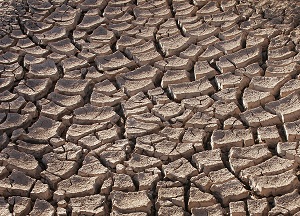How Can a Drought This Big Sneak up on Us?
 Weather forecasting has gotten a lot better in the U.S. in the last 20 years — today, the four-day forecast is as accurate as the two-day forecast was in 1988. And storm forecasting — both for tropical storms, like Isaac, and winter storms — is also dramatically better.
Weather forecasting has gotten a lot better in the U.S. in the last 20 years — today, the four-day forecast is as accurate as the two-day forecast was in 1988. And storm forecasting — both for tropical storms, like Isaac, and winter storms — is also dramatically better.But seasonal forecasting remains poor, and the current drought — which is wreaking literally billions of dollars of damage to farmers and business people across the country — is a vivid example.
As recently as May, according to this excellent analysis by Andrew Freedman of “Climate Central,” the U.S. Agriculture Department was predicting the biggest corn harvest in the U.S. since 1937, based in part on how much corn farmers were planting.
In April, May, and June, the National Weather Service’s drought outlook “showed no hint of an impending widespread drought, let alone one of the top 10 worst droughts on record,” as Freedman put it.
So while farmers across the country were spending money to plant crops, they had no hint of the devastating weather just a few weeks over the horizon.
How could weather forecasters not be able to anticpate a drought of this severity and extent, that was just around the corner?
Quite simply, the tools scientists have to understand seasonal climate aren’t up to the task. Those tools could be better, but NOAA and NWS aren’t getting the resources they need to gather detailed data about weather, and to develop the sophisticated computer models that would help them see large seasonal weather patterns developing.
The total NOAA budget — which includes not just weather prediction but operation of satellites, along with fisheries management — is $5 billion. The drought is estimated to be costing at least twice that — $10 billion — in damage to the U.S. economy, in just this single year.
Good, reliable weather forecasting is a quiet but essential tool for keeping the economy productive. Freedman’s story, “Lack of Warning on Drought Reflects Forecasting Flaws,” is discouraging for what could have been avoided had we known the drought was coming, but a reminder that relatively small investments in weather science pay huge dividends.
You can return to the main Market News page, or press the Back button on your browser.

